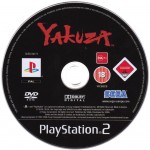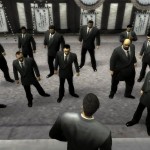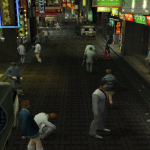Yakuza Review
The first game in Toshihiro Nagoshi’s hugely successful Yakuza franchise is a fascinating little game because it showcases a lot of familiar elements that will stay with the series all the way to present day. Yakuza is an incredibly accomplished first entry in a series that has simply reiterated on its template instead of taking it in a completely different direction.
The game’s plot sees Kiryu Kazama serving 10 years of jail time after being framed for a crime he didn’t commit. Upon his release from prison, the Tojo clan (which Kiryu is a part of) are hit with a heavy loss when 10 billion yen is stolen from them. Kiryu then comes into contact with Haruka, an orphaned child who is being targeted by the Tojo clan as they suspect she has a connection to the theft of their money. It’s up to Kiryu to get to the bottom of the mystery surrounding the stolen money and find out what part Haruka plays in all this.
As the first Yakuza release to find its ways to Western shores, SEGA took the misguided approach to marketing the game as a sort of Japanese Grand Theft Auto. This was pushed heavily in marketing and through its use of the acting talents of Michael Madsen, Eliza Dushku and Mark Hamill. The trouble is the Yakuza franchise is nothing like Grand Theft Auto, being more of an action adventure title that comes across as a combination of Shenmue and Dynamite Deka.
Each chapter sees you exploring the bustling streets of Kamurocho, speaking to various characters and following small threads of information that allow the story to progress. In amongst your sleuthing, you often get into fights with random thugs and other yakuza and the game turns from adventure game into action game. The combat in Yakuza is fast, violent and quite extreme as a result. You fight with a combination of punches, kicks and throws which can be upgraded the more you fight. Items that litter the streets can also be used in battle. These range from things like traffic cones, crates and even bicycles.
The real highlight in Yakuza’s combat comes in the form of the heat gauge. As you fight you slowly fill up the heat gauge. When it gets to the top you can now dish out some devastating heat moves with either your bare knuckles or the various objects that litter the area. Heat moves deliver enormous damage to enemies and often illicit the sort of reaction you’d probably get from watching someone getting kicked in the testicles. These moves are not for the faint of heart.
Sadly, the combat in this first title hasn’t aged particularly well due to the way you can’t focus your attacks on a single enemy. There is no way to lock onto enemies and you can’t side-step either. While you do have a defensive block, you can’t activate it in the middle of an enemy’s combo, which means you often have to ride it out until you can get back on the offense. It’s a bit of a clunky experience that often sees you getting ganged up on by multiple enemies, aggravating the issues even further.
Presentation is where Yakuza really shines. Kamurocho is a wonderfully dense slab of atypical Japanese city and despite this game’s choice to have it split up into smaller areas that you transition between, it’s still as vibrant and inviting as ever. Kamurocho is host to lots of varying shops, restaurants, arcades and other distractions that make the world even more believable. This is a surprisingly detailed representation of Japanese city-life that is unfortunately spoiled by the localised voice work.
SEGA’s hiring of all that quality voice talent doesn’t result in the desired effect. The voice acting in Yakuza is horribly stilted and wooden. Actors were obviously reading the subtitles off screen as you’ll notice that when a sentence continues across multiple lines of dialogue, the characters wait for each line to appear on screen before you start hearing it. It ends up making the game sound more like the hammy, terrible dialogue in The House of the Dead 2 and not an expansive, Japanese gangster thriller.
Thankfully there’s more than enough high quality content in Yakuza then there is bad. Kamurocho is the real star here. It’s a beautifully realised, dense, urban area of Japan that accurately recreates the vibe of a bustling Japanese city. This is where you spend most of your time; exploring, following clues and generally wasting hours in the various side-attractions that line the streets. Sadly, the rather dated combat and naff voice acting take the sheen off the game. The voice acting spoils an otherwise intriguing story that sets the scene for the games that follow and the lack of side-stepping and lock-on during combat often makes the more intense fights a real chore. Look past that and you’ll see a confident first step into a series that only gets better with every title.
7/10
Written by Lewis “Sonic Yoda” Clark on 7/8/2017















